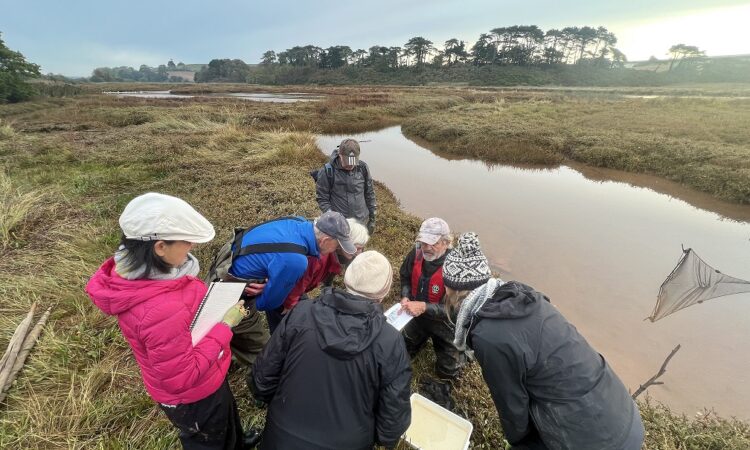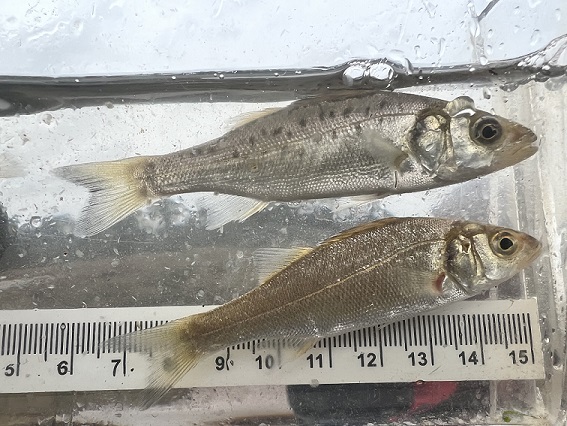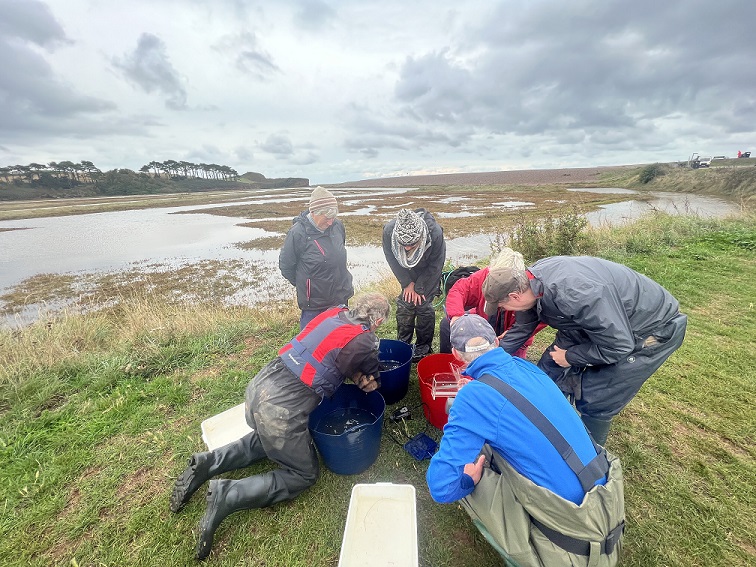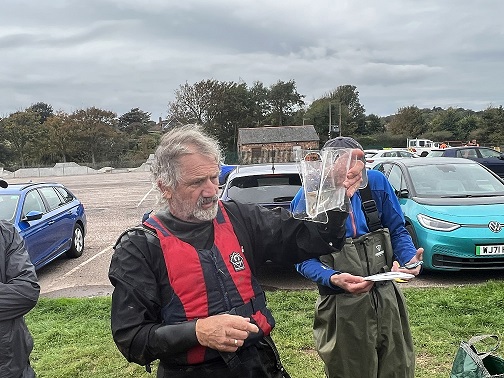
Estuaries are extremely productive environments, playing a crucial part in the life cycle of many fish species. They act as key marine fish nursery grounds, as well as vital corridors for migratory species. These are highly dynamic environments, with abrupt changes in oxygen concentration, temperature, turbidity and salinity applying over both the short term and over longer seasonal cycles. The intertidal areas and saltmarsh of the estuarine fringes are vitally important refuge and feeding habitats for fish fry. Saltmarshes exist as a natural component of the estuarine system in the more saline reaches, extending as a band of higher plants on the foreshore between mean high water neap tide level and the mean highwater mark. Saltmarshes probably represent the optimal nursery grounds for the young of important marine species such as the sea bass.

As part of the PACCo funding, several Work Packages are underway; these will feed into the creation of the ‘PACCo Model’. Work Package 1 includes environmental monitoring, environmental risks, solutions, benefits and disbenefits of these two managed realignment schemes. The lessons learnt will then feed into the model, which will act as a guide for 70 other potential estuaries in the France (Channel) England area that could be sites for this form of adaptation.
As one element in LORP, a citizen science fish survey programme was designed in the Lower Otter estuary and associated salt marshes in advance of the scheme being implemented. Surveys took place over the 29th & 30th of September 2021 with repeat surveys undertaken on the 26th July and 30th September, 2022. The fish community encountered was dominated by thin-lipped grey mullet, sea bass and common goby, although there were some surprises, such as the capture of low numbers of pollack, mackerel, herring and sprat. These species are considered more ‘marine’ but on larger tides in the late summer can be found in the lower areas of the marsh, despite having a more limited tolerance of low salinity conditions. These young fish may only be present in the marsh for a few hours on the bigger flood tides which tend to bring increased saline penetration.
Regarding the more common fish seen, the common goby is present in these systems throughout the year. Only living for about 18 months. spawning takes place early spring, often in and on empty shells, at the base of an estuary. The very early life stages as small as 10mm are fully formed like adults by June. They can move quickly up into the marshes, often at the very head of the tide. This is probably the only species permanently present in the lower estuary and saltmarshes. Thin-lipped grey mullet are present in the Otter at two life stages: young of the year at 15mm plus move into the saltmarsh and tidal creeks, coming from coastal spawning sites from the summer through until the late autumn, (often accompanied by some 1 year old fish). They move in and out effortlessly on the tidal flows. Larger fish at 30cm plus can be seen right up the estuary in freshwater conditions at the footbridge during the summer months. Another species found within the Otter estuary is the flounder. As a flatfish with no swimbladder, the flounder cannot drift in and out as easily as the previous species. Postage stamp sized young of the year flounder can be seen in both the lower estuary and at the lower edge of the saltmarsh in the summer from June onwards.

All fish in estuaries and saltmarshes use tidal flows to migrate in and out, whilst using very little energy to swim. Most fish (other than flatfish) have a swim bladder which allows them to adjust to depth changes and also allows them to be neutrally buoyant. In this condition they can pick the flooding tide to move in as soon as the current permits, simply drifting with the flow. In the main channels where there is always water present at low tide, fish can hide in the extreme margins or on the bed, keeping out of the ebb flow until the next flood allows them to move up again. This is called Selective Tidal Stream Transport. Very small young fish, barely able to swim yet, can use this tactic to move right up a large estuary in the summer. In the marshes and channels which dry out on the ebb, as the tide begins to recede fish hug the bed and move down to safety in deeper water, only to return on the next flood.
The intertidal zone is twice as productive as the subtidal zone. This is largely because the area is dried out and then rewetted very regularly, promoting huge invertebrate numbers. Fish really want to get at this food source. At high tide, the shallow margins of estuaries and saltmarshes provide an abundant food source in warm shallow water and welcome refuge from bird and fish predators. All of the fish need to be carrying out a “dynamic risk assessment” continually when in these fertile shallow feeding areas. “I know the food is there but how do I get there safely, where is the shelter, which channels do I use to get in and out when is it best to leave as the tide ebbs?” As we learn to understand this behaviour better, we can improve our designs of managed realignment to mimic the natural processes which occur in a saltmarsh and so provide better fish survival and growth. This is important when we look from the historical context. 80% of the saltmarsh and 90% of the seagrass beds, (also good for young fish) around the British Isles have been lost in the past few centuries. One study on the Firth of Forth in Scotland has estimated that the total loss of intertidal habitats through sea defence construction and riparian development has seen the loss of 66% of the fish production in the estuary over the past 200 years. Now apply that very typical case to the whole of the Atlantic coast of Europe. We thought that overfishing was the real problem but we missed the bigger picture!
Over the last centuries we have destroyed the best fish nursery grounds without even knowing it! New habitats such as these realignments will make important contributions to local fish production, carbon sequestration and provide a wealth of other benefits as well as protecting us from flooding and storm surges.

The latest PACCo fish monitoring report is available from the PACCo website downloads page here.




